Madeira Adventure: Day 3 - Exploring the Beauty of the Wild West Coast
Lush cliffs, stunning viewpoints, banana plantations and natural pools
by Monika Suchoszek
Every evening, we made plans for the next day based on the weather and how tired we felt that day. The idea was to avoid having the most intense hiking days one after another. The weather looked more stable the next day, so we decided to hike up Pico Grande later. Today would be a less demanding day with a 9 km hike and a longer drive along the west coast, stopping at many viewpoints along the way. Our final stop was in Porto Moniz, where the famous natural pools are located. Everything took us longer than we planned, so I had to drive back to Funchal after sunset. However, the road via the inland (VE4) route is really good, traffic was low, and the drive was very pleasant.
We started our hike with Levada do Moinho, which was very easy and well-maintained. After taking a look at the river and having a break next to it, we started climbing the stairs to reach Levada Nova, which had been above us the whole time. In this area, we also noticed signs of last summer’s wildfires and new ferns growing through the ash of the burnt forest, bringing life back to this place.
At first, the path was very easy, leading to spectacular waterfalls, not necessarily because of their height or size, but because you can walk behind them. A waterproof jacket is highly recommended as both levadas have some more wet parts with water dripping above the head. Afterward, there was also a fairly long tunnel on the way, but the light from a cellphone was enough to walk through.
After the tunnel, the view opened up to a huge gorge behind, and for me, that was the scariest part of all the hikes during our entire stay on Madeira. I don’t remember the last time I was paralyzed by fear like this—probably when I was rock climbing in France years ago. I don’t have a strong fear of heights; flying isn’t my favorite thing, and I found paragliding stressful, but I still enjoy hiking in high mountains and tackling technical rocky sections, unlike my husband. However, this time, I really couldn’t force myself to take another step at one point, right after passing the waterfalls, where the beautiful views of the gorge began.
The problem was the missing railing. At least half of the trail has no handrail, and the path itself is just a 30 cm-wide concrete levada that ends with a vertical drop. There is absolutely nothing to protect you—not even trees—so it caused me a lot of stress to finish this section. I would not do it again. I’m not really convinced the walk was worth it. The passage behind the waterfall is cool, but other than that, we found this hike quite mediocre. I would not recommend it on a rainy day, nor for children or elderly people. Photo below was taken after the problematic section, here you can see very nice railing that was unfortunately not covering the whole exposed part of leveda.
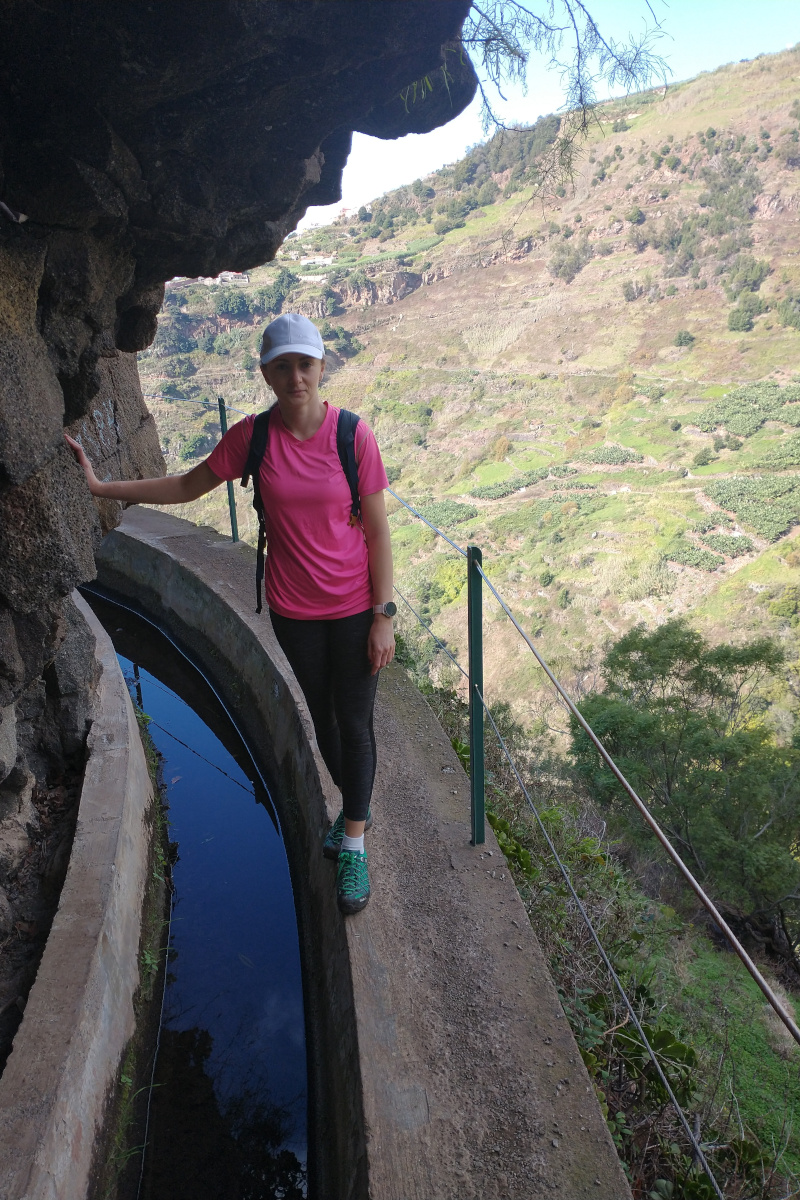
Now it was time to relax, and our first stop was Madalena do Mar, a tiny town known for its famous banana plantations. There is a very short trail, RB3 Vereda da Vargem, also called the Banana Route, which allows visitors to immerse themselves in the world of banana cultivation. It was really cool to explore! It’s definitely a great place to visit with kids, and it might be helpful to read a little about banana plants and their growth stages beforehand to understand what you’re looking at.
You can see bananas already covered with blue plastic bags, ready to be harvested. Bananas are cut while still green and left to ripen off the tree. On the other hand, you can also see tiny bananas just starting to grow and many banana flowers with delicate white pistils that will eventually become bananas. I found banana flowers especially spectacular and beautiful! Make sure you’re not scared of lizards because we could hear many of them running away with each step we took. It was difficult to see them since they moved so fast, but when we tried walking slowly and staying very quiet, we managed to spot a few resting in the sun.
It typically takes 9 to 12 months for a banana plant to produce a flower. After the flower appears, it takes 3 to 6 months for the bananas to develop and ripen. The female flowers at the top of the banana stem develop into bananas, forming a “bunch”. Each bunch consists of multiple “hands” (clusters of bananas), and each hand contains 10 to 20 individual bananas (often called “fingers”). A full bunch from a banana tree in Madeira typically consists of 5 to 10 hands, meaning one flower can yield around 50 to 150 bananas on average. After producing only one bunch, the banana plant dies, and a new plant grows from its base.
Unlike the larger Cavendish bananas found in supermarkets, Madeira bananas (banana da Madeira) are smaller, sweeter, and have a more intense flavor. For us, these bananas had a different texture, more like pudding and felt less starchy. They are mostly grown by small farmers and harvested by hand. Most Madeira bananas are consumed locally or exported to mainland Portugal, we had already tried them in Lisbon.
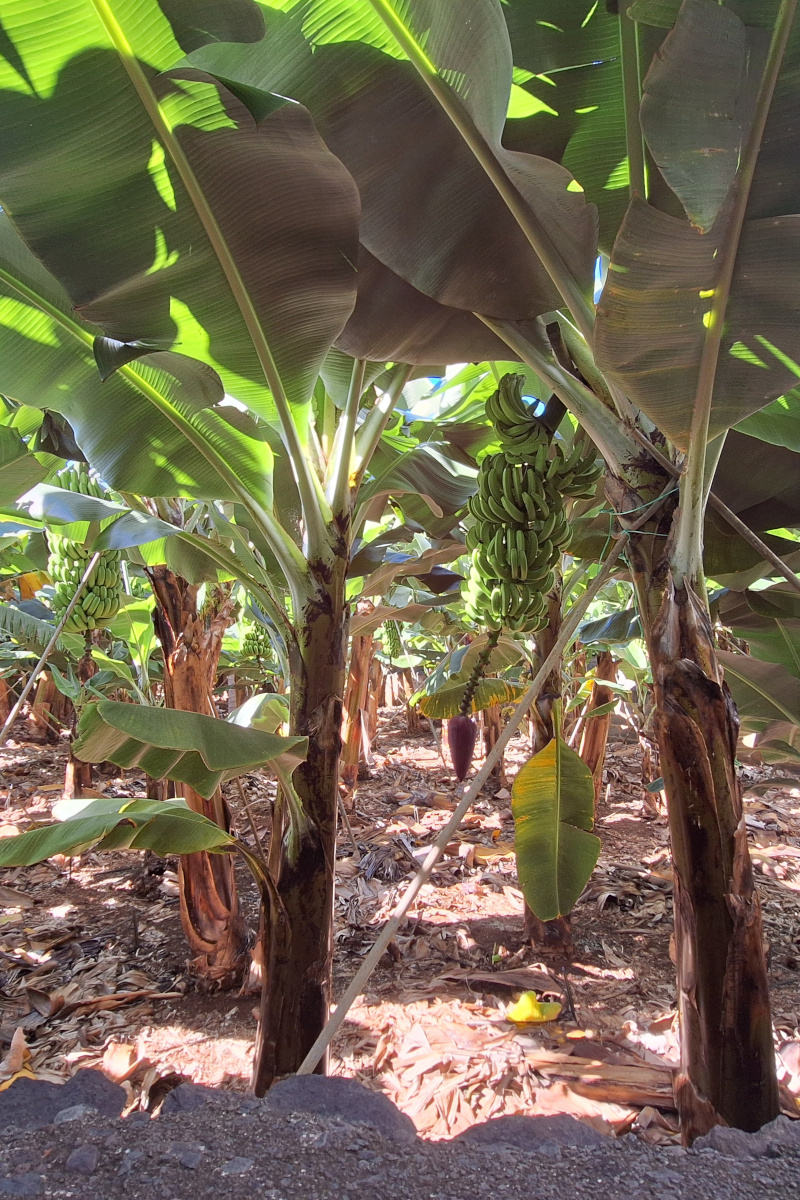
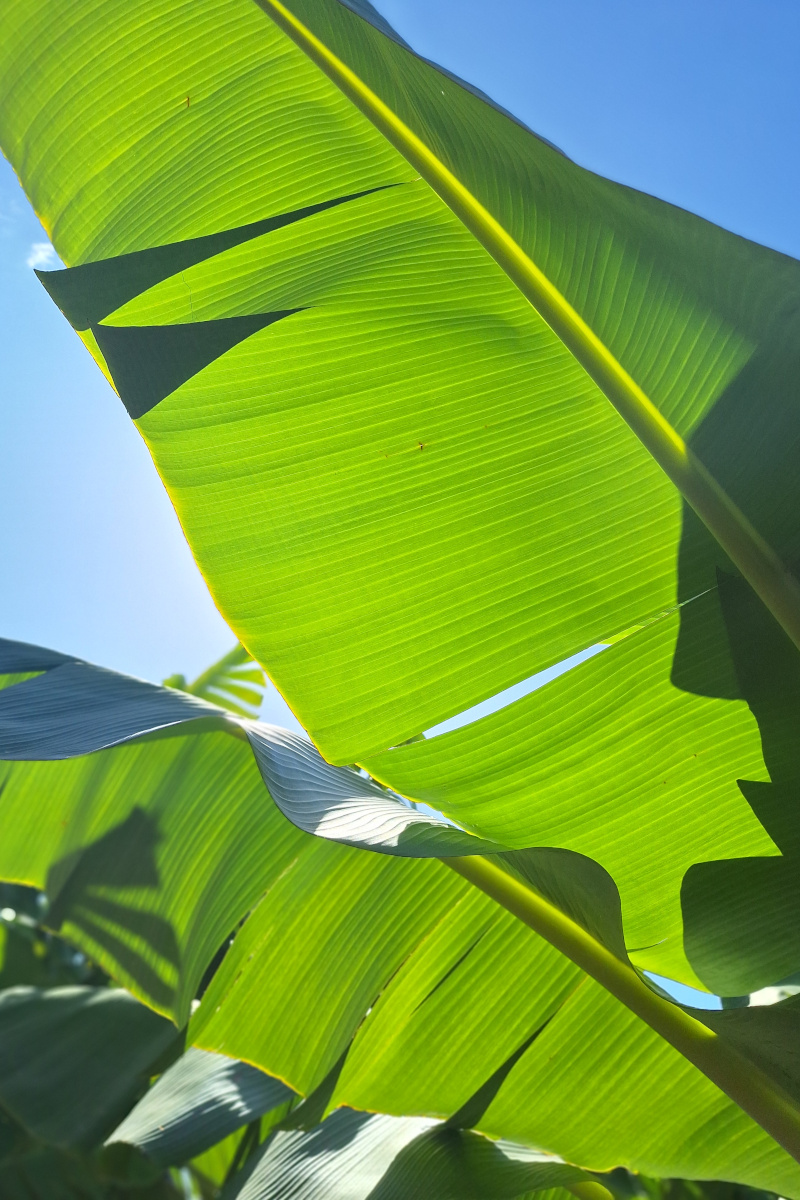
Now it was time to stop by a few viewpoints. Our first stop was Miradouro do Massapez, the only viewpoint where we were completely alone, surrounded by flowering aloe vera plants. It offered a stunning view and was a very quiet place, with a sheltered seating area and a huge stone barbecue if you wish to bring your own coal and food. We had to take a short detour to get here, but the parking area was spacious, and we really enjoyed the stop! Many people describe this place as an excellent sunset-watching spot.
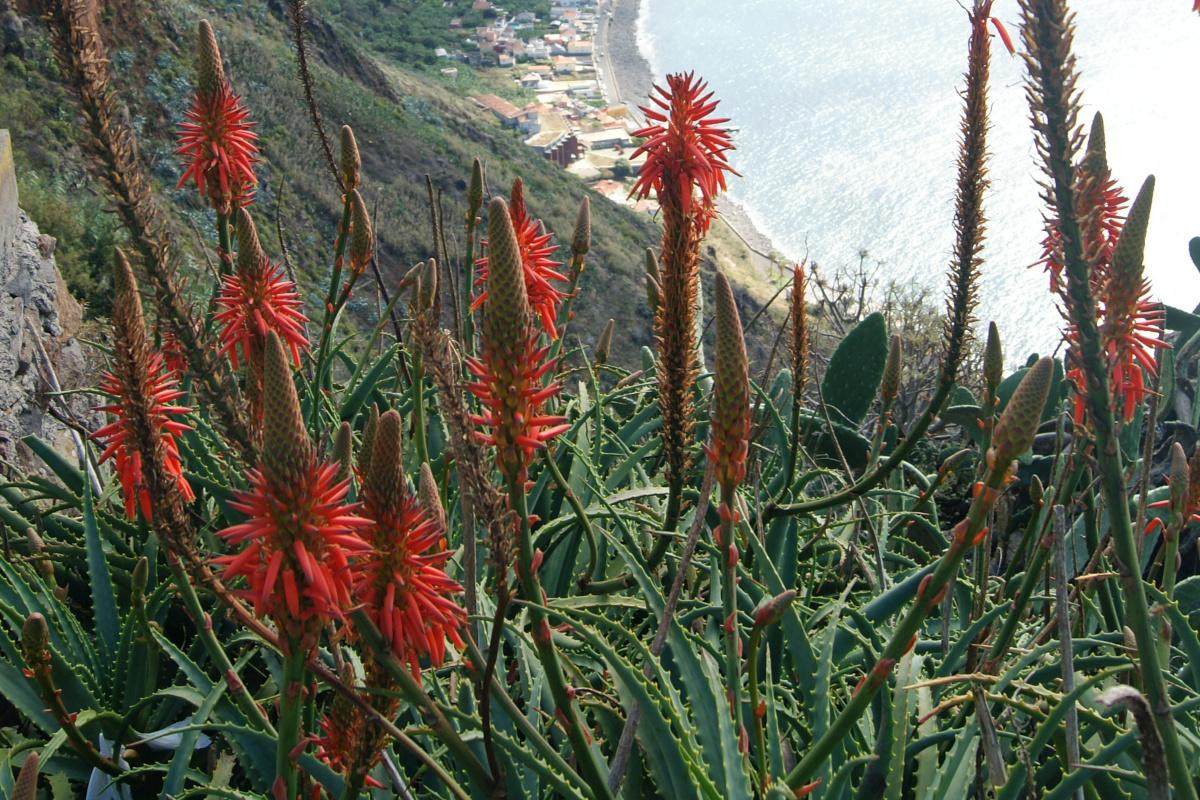
Miradouro do Fio, with its cozy-looking restaurant, was our next stop. The coastline might look similar to what we had admired from the last viewpoint, but this time, the mountains going directly into the ocean. There was no city or road below, just pure nature. From here, you can see the nearby lighthouse on the right, Madeira’s westernmost point at Ponta do Pargo, so let’s go there!
It feels like Madeira’s west coast is less touristy because this was another place with very few visitors. We explored Miradouro Farol da Ponta do Pargo, where the lighthouse stands 300 meters high, by walking around it and checking out the dramatic view from the cliff. You can go down a bit, but be careful, there is no security, so do not get too close to the cliff edge. We didn’t go inside the museum because it was already closed. There are no benches to sit on, and after a rainy day, this area will get very muddy.
When it comes to viewpoints, Miradouro da Boa Morte was definitely one of the best. The combination of the blue ocean, deep green vegetation, and cows walking around made it look very special. The view from the parking spot and the path leading to the viewpoint was quite unusual. From the viewing platform, you can look straight down and admire waves crashing against the rocks. When we were there, some tourists were having a lunch break with lots of snacks, which attracted a huge number of lizards that surrounded them. One even tried to climb my leg when I got too close! There is something magical about this place, the beautiful greenery, the breathtaking coastal view, the peace and quiet, and the lack of crowds.
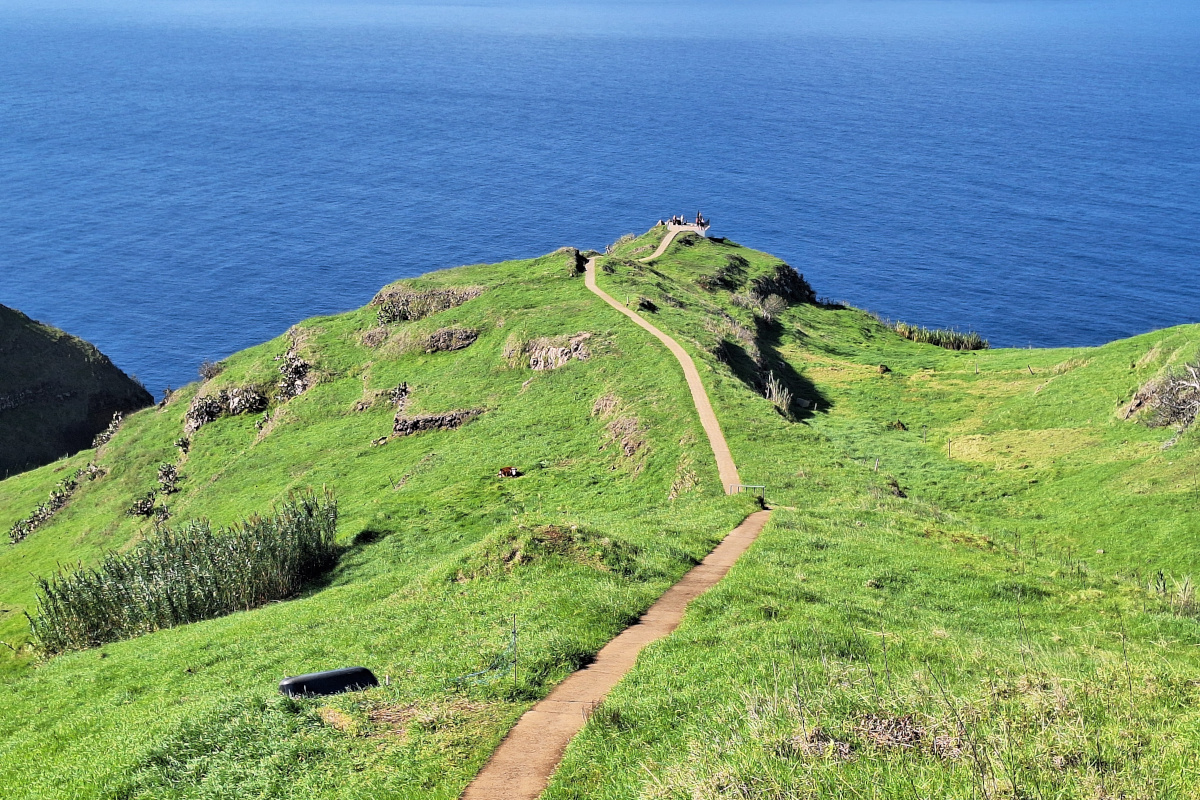
From here, you can see the coastline towards Achadas da Cruz, which you can reach by cable car. Initially, we wanted to
take this cable car (Miradouro do Teleférico das Achadas da Cruz) and explore the area, but after the stress of the exposed
parts of Levada Nova, we lost our enthusiasm for it and decided to skip it this time.
On the way to our last stop for the day, we had lunch at a small bar near Achadas da Cruz and also stopped to grab some pastries in one of the villages along the main road (more details in the practical section of this post). To get a nice view of Porto Moniz before entering the town, it is worth stopping for a moment at Miradouro da Santinha, which is right by the road, definitely a quick stop worth making. When we arrived in Porto Moniz, we noticed that quite a few parking areas were under construction. Because of this, we parked a bit further away, about 100 meters from the main parking lots. Fortunately, it was marked on the Organic Maps app that we always use, so we had no trouble finding it (address at the end of the post).
First, we passed by the Porto Moniz Natural Swimming Pools, where you need to pay for entrance. There were fewer people than we expected, but that was likely due to the late afternoon hours and the fact that the sun had already disappeared behind the mountains. The pools looked really cool, especially with the waves crashing against the rocks nearby, but we decided to walk further to another more natural spot with no admission fee. These natural pools, formed within lava rock directly at the edge of the ocean, looked very interesting. However, having swimming shoes would have been a good idea, as the rocks felt quite sharp. The area wasn’t crowded, and a few people were still swimming. What really caught our attention were the spots where the water was completely calm, forming clear, still pools right next to the wild ocean waves.
In the end, we decided to go back and enter the first swimming pool, if not to swim, at least to get closer to the crashing waves and see the town from a different perspective. The water, however, turned out to be way too cold for my liking, and I only managed to immerse myself up to my waist, so no swimming for me this time! If the weather had been sunnier, I think we could have really enjoyed this place, but unfortunately, we arrived too late (around 5 PM).
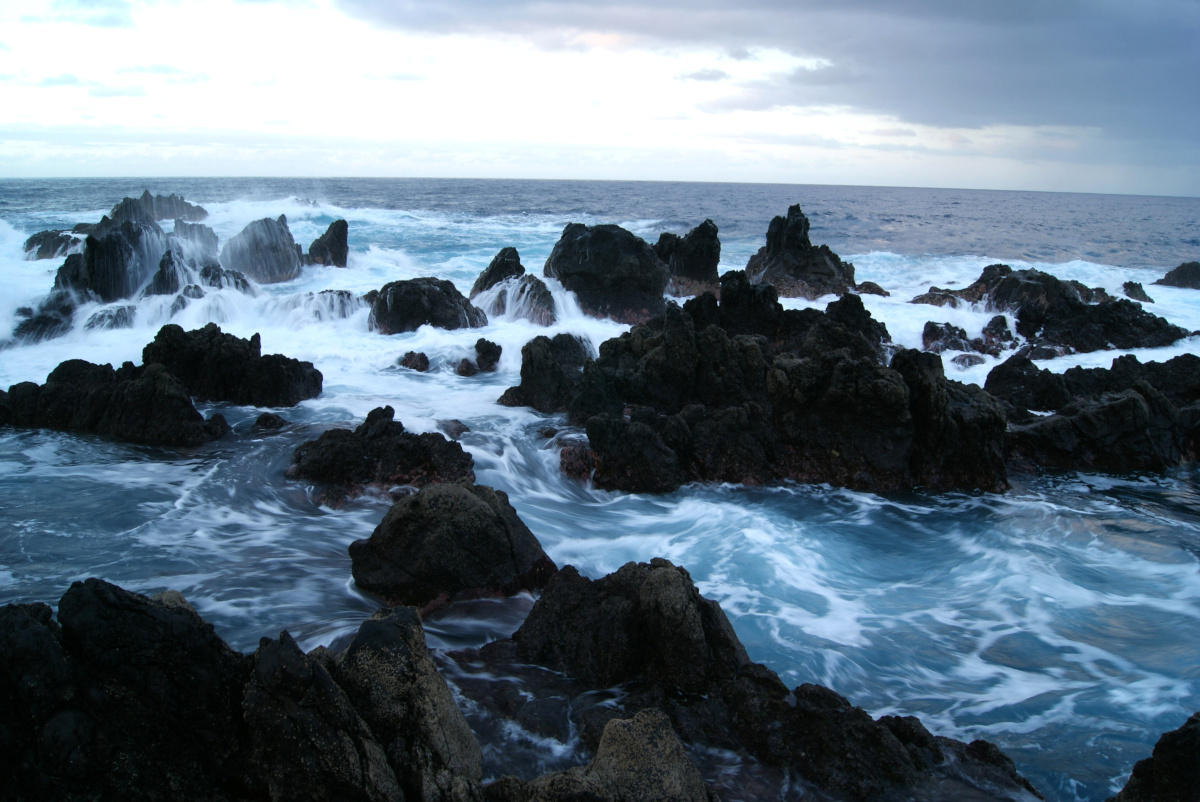
After an hour of driving, we were back in Funchal, ready to hit the bed before exploring Curral das Freiras valley next day.
Practical info:
-
Official website to check if hiking trails are open after the wildfires that occurred during the summer last year.
-
Tickets for paid hiking trails can be bought online on this website. From January 1, 2025, non-residents will need to pay to hike on over 30 routes managed by the Institute of Forests and Nature Conservation (ICNF) in Madeira. These are basically all hikes marked as PR.
-
Starting point for the hike mas church Igreja da Lombada in Ponta do Sol where we parked our car. We did both Levada do Moinho and Levada Nova as loop of 9km. Ponta do Sol spine run - Levada Nova
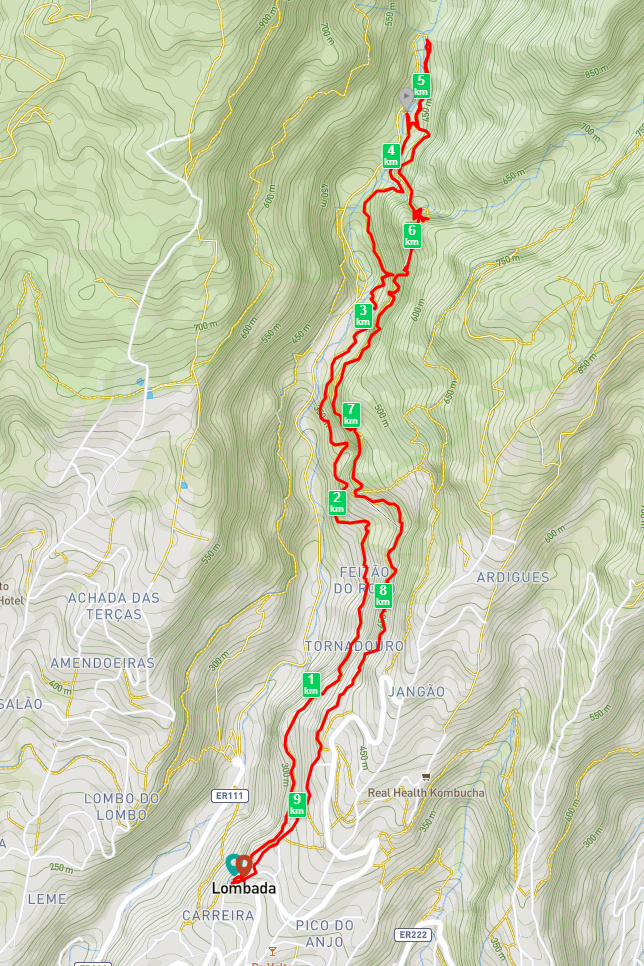
-
During our travels, we always use Organic Maps: Offline Hike, Bike, Trails, and Navigation app, which was very accurate on Madeira, we didn’t get lost even once.
-
RB3 Vereda da Vargem called Banana route, very short, perfect for a walk with small kids.
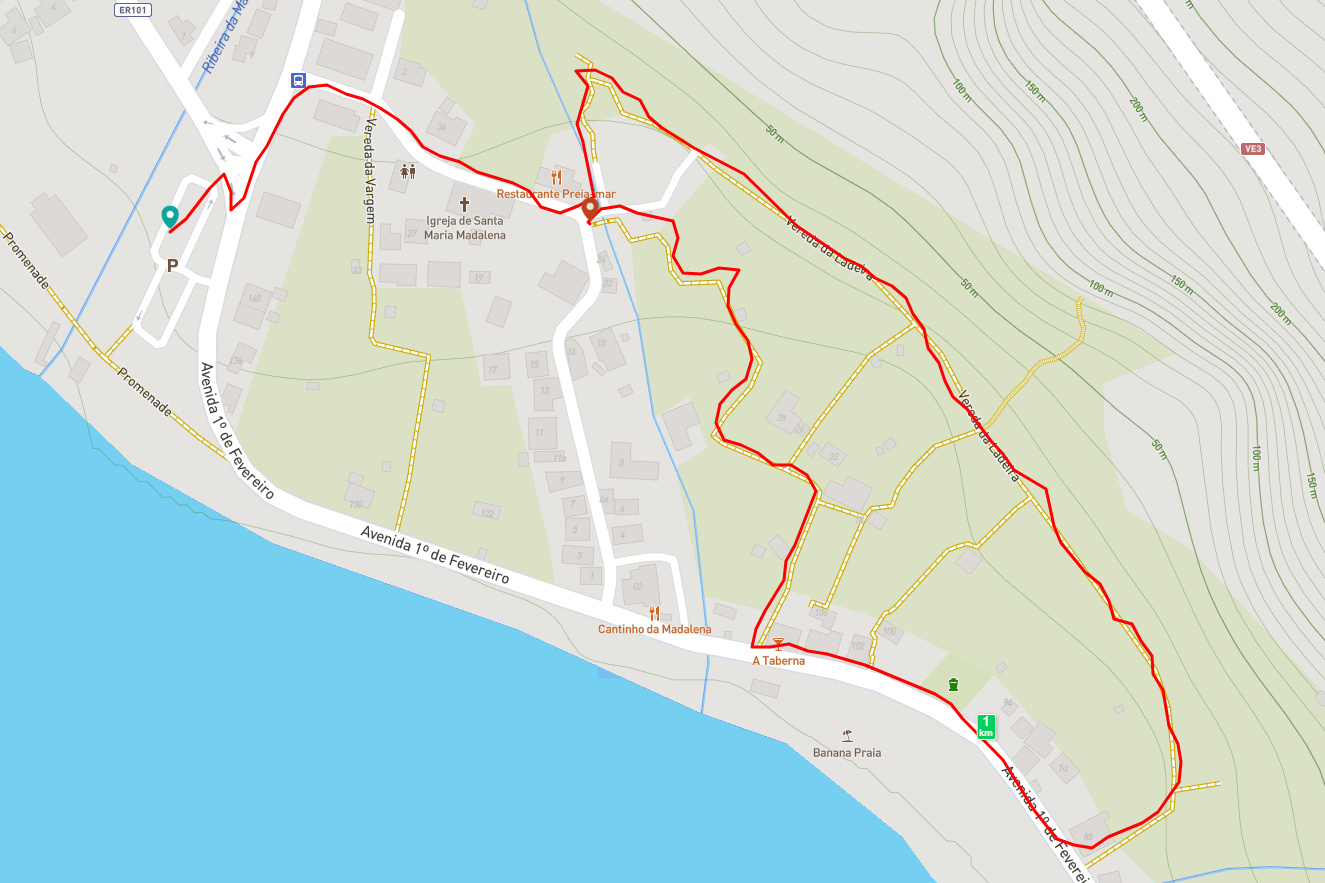
- Restaurant - 101 Bar. Very friendly owner. We liked the beef sandwich, but the second dish was disappointing (some kind of meat stew), I had to
leave half of the meat as it was tough and felt like very low quality. Very cheap, but no prices listed anywhere. We paid
less than 20 euros for both of us, including two mains and beverages.
Address: ER101, Sitio da Igreja, ER101 39, 9270-013 Achadas da Cruz, Portugal
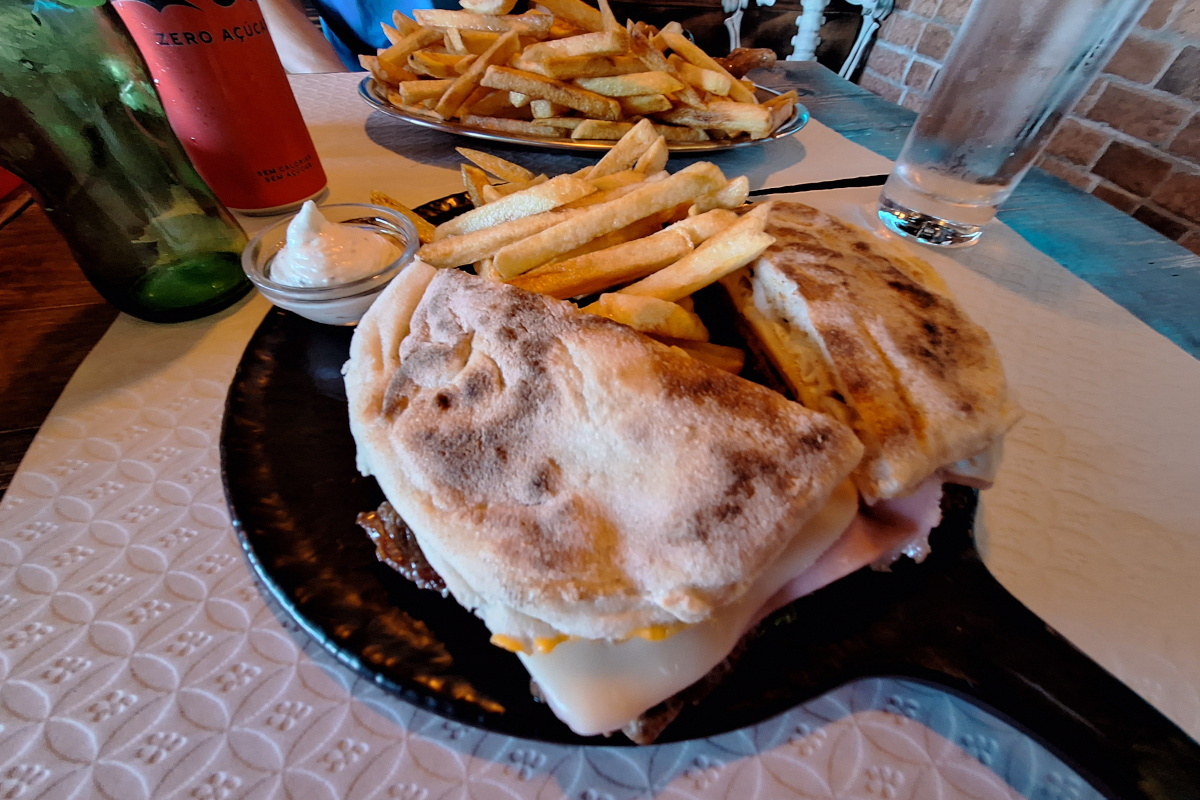
- Bakery - Padaria Rodripan, A very small bakery located in someone’s house. Very tasty and cheap, offering a few different
types of pastries as well as bread, including a soft, sweet one that we bought for our hike the next day. Highly recommended,
but expect a very basic seating area with simple plastic chairs.
Address: Rua da Terra Coimeira, Santa, 9270-093, Porto Moniz, Portugal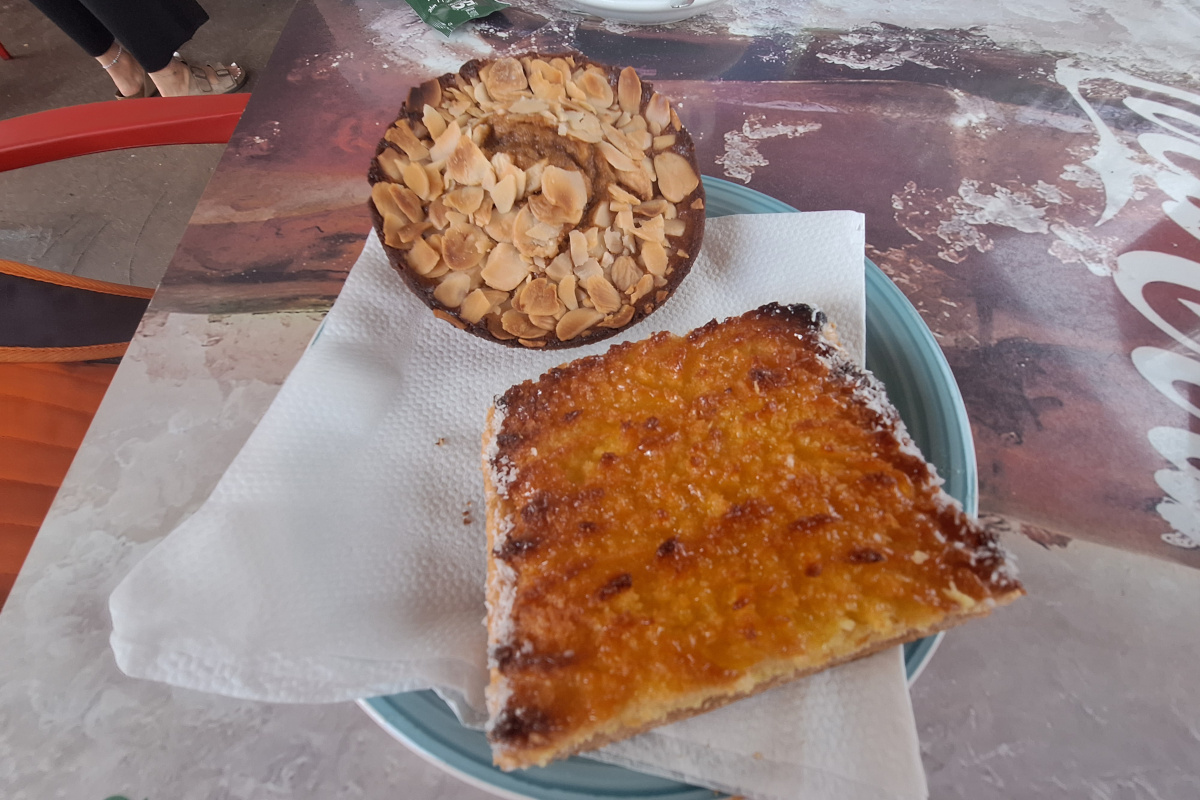
- Porto Moniza parking, free parking on a lawn, but a bit hidden. 5-minute walk from the swimming pools, though I’m not
sure how long it will remain free since all other parking areas were now paid. We also noticed a large information board
near the construction site of a new parking lot closer to the swimming pools.
Address: R. da Escola Velha 32, 9270-095 Porto Moniz, Portugal
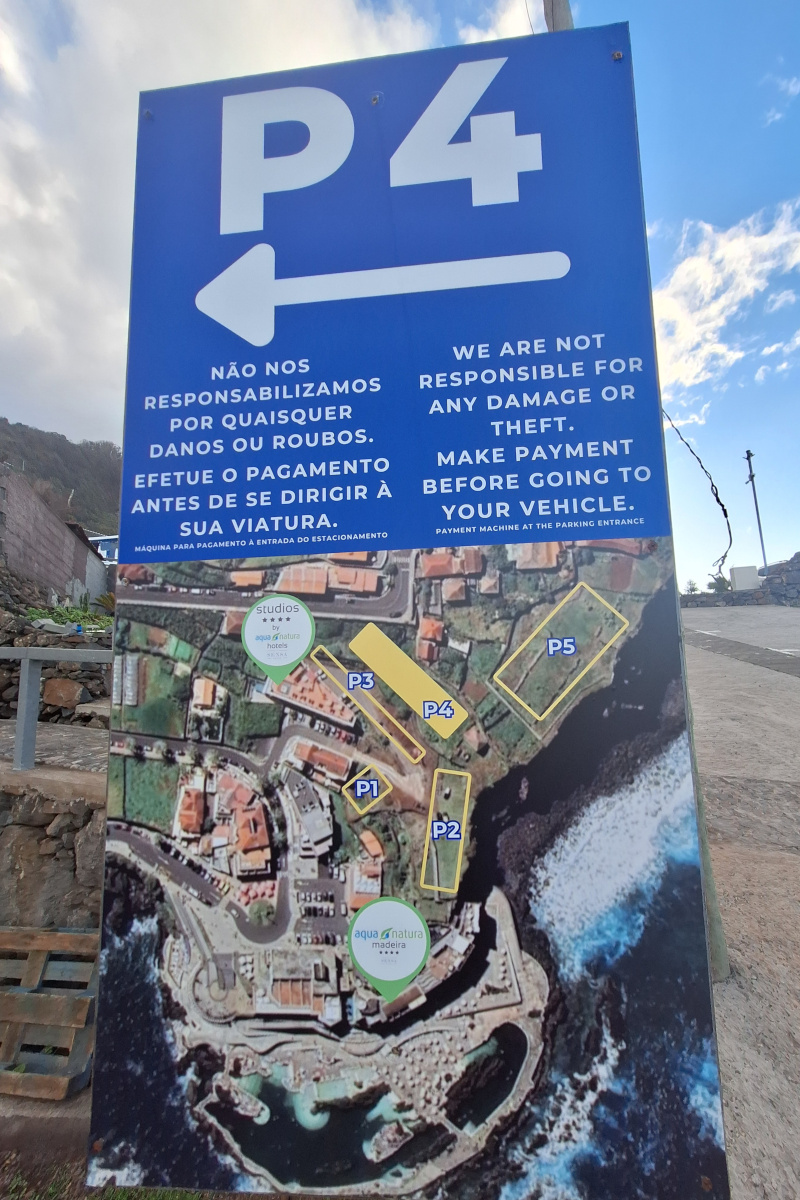
- Natural Swimming Pools – €3 entry fee. Nice swimming pools, but the water was very cold! The sunset happens early due to the mountains, so we arrived too late to fully enjoy the sun and didn’t stay long.
Subscribe via RSS
